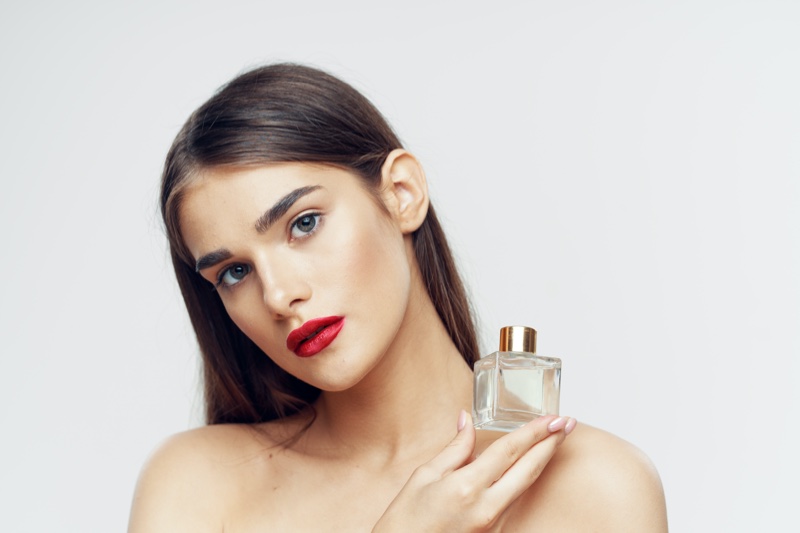
Learning how to layer perfume unlocks a world of personalization. It allows you to create a scent that’s uniquely your own. By combining multiple fragrance notes, you can craft aromas that shift with your mood, echo the season, or suit a particular occasion.
When exploring perfume for women, it’s important to understand how these scents work together. Whether you are a fan of floral scents like jasmine or fruity notes like orange blossom, get ready to build a custom fragrance that shines.
How to Layer Perfume

Perfume layering involves applying multiple fragrances to create a signature scent. This allows for unique combinations of notes like floral, woody, or citrus. This practice offers endless possibilities tailored to your personality and mood.
Layering’s beauty lies in its flexibility: from light daytime blends to warm evening scents, it suits any occasion. For successful layering, consider how notes interact.
Start with a base note like sandalwood for depth, then add a refreshing top note such as bergamot. Mixing an eau de parfum with a lighter eau de toilette can create a balanced, evolving aroma.
Layering isn’t limited to perfumes. You can include scented lotions, oils, and hair fragrances to build a complex, lasting scent profile.
Arranging and Pairing Scents

Thoughtfully arranging your perfumes can improve layering. Start by grouping scents into fragrance families, such as florals, citrus, spices, woods, or gourmands, which often blend harmoniously. For example, warm amber spice pairs beautifully with vanilla for a rich, cozy effect.
For effective layering, place heavier, richer scents as the base layer to support lighter top notes. Another approach is organizing by occasion, selecting fragrances for everyday wear, special events, or cozy nights, which allows you to match a scent to your mood.
When choosing complementary scents, consider these classic pairings:
Citrus and Floral: Bright citrus notes like lemon or bergamot paired with jasmine or peony create an uplifting, fresh vibe.
Woody and Spicy: Earthy sandalwood combined with cinnamon evokes warmth and coziness.
Gourmand and Sweet: Vanilla layered with dark chocolate transports you to dessert heaven.
Beyond these combinations, think about the mood you want to create. Fresh green notes like basil or mint paired with citrus offer a refreshing lift for daytime, while rich amber and musk create a mysterious aura for evening wear.
Tips for Applying Layered Perfumes Effectively

To get the most out of your layered perfumes, consider the following tips:
Start with Your Base: Apply the stronger fragrance first. This serves as your foundation.
Layer Wisely: Add the second fragrance gradually. Start with a small amount to see how it interacts with the base scent.
Apply Strategically: Focus on pulse points—wrists, neck, and behind the ears— to let the scent develop naturally throughout the day.
Does Layering Perfume Make it Last Longer?

Yes, layering perfume can make your scent last longer. By combining two or more fragrances, you build a more complex structure that can withstand the test of time on your skin.
When layered properly, the first scent acts as a base, allowing the top notes of the second fragrance to shine through.
Additionally, incorporating longer-lasting notes like musk or amber into your layers can help extend the wear throughout the day. This way, you won’t have to reapply as frequently.
Experimenting with Seasonal Scents

One of the most exciting aspects of layering fragrances is adapting your scents to the changing seasons.
In spring and summer, light, fruity, and floral fragrances can help you feel refreshed. In fall and winter, deep, spicy, and woody scents often evoke warmth and coziness.
Mixing these scents according to the seasons can keep your experience fresh and intriguing. For instance, layering a pumpkin spice perfume with a touch of vanilla makes for a perfect autumn aroma.
On the other hand, combining a coconut-scented fragrance with a splash of lime can transport you to a tropical vacation year-round.
Common Mistakes to Avoid

Not all scents work together. For a successful fragrance layering experience, here are a few combinations and categories you might want to avoid:
Overly Strong Scents: Avoid layering fragrances that are already very potent, as they can clash and create an unpleasant olfactory experience.
Similar Notes: Pairing similar scents without contrast may create a muddled fragrance, lacking depth.
Conflicting Scents: Mixing scents that evoke opposite feelings (like fresh and musty) can create an unbalanced aroma.
Beyond scent combinations, there are other fragrance layering techniques that you should avoid.
Overapplying: Less is often more. Applying too much can overwhelm the senses and negate the subtleties of the layered scents.
Ignoring Skin Type: The type of skin you have can affect how fragrances smell and last. Oily skin generally holds scents better than dry skin.
Not Testing Before You Commit: Always test your layers before wearing them out. You can use testing strips. Some combinations may react differently once they are applied.
When to Avoid Layering

Avoid layering when working with complex perfumes, as mixing intricate compositions can muddle distinct notes and lose intended nuances. Your favorite fragrance might be designed to stand alone.
Strong fragrances, such as oud or patchouli, may overwhelm other scents, creating an overpowering blend.
Contrasting profiles, like fresh aquatic scents with heavy spices, often clash, resulting in an unbalanced scent.





